French River Cruise Tips

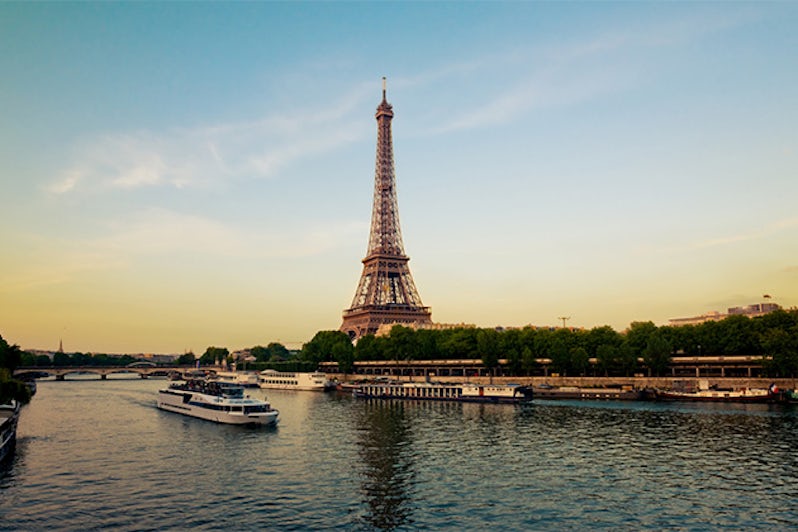
France provides the perfect backdrop for a river cruise -- whether it's for first-timers or repeat river cruisers who've already explored the most popular stretches of European rivers along the Rhine and Danube.
The third-largest country in Western Europe, France provides the opportunity to experience world-famous sights and cities -- such as the Eiffel Tower in Paris -- and enjoy the country's equally renowned cuisine and wine along the way. The majority of itineraries are seven nights and can be linked to short pre- and post-cruise stays offered by the cruise lines, or longer land-based vacations in France or a neighboring European country.
In common with river cruises throughout the rest of Europe, vessels typically carry 150 to 200 passengers. However, France's extensive network of canals and narrow waterways also offer more opportunities for barge cruising in either purpose-built hotel boats or converted traditional working barges. These cater to six to 24 passengers.
Size aside, these cruises share similarities. Days will be structured around mealtimes (usually with a buffet-style breakfast and set dining times for lunch and dinner). Most lines now include wine, beer and soda with meals and complimentary tea and coffee throughout the day. Some are all-inclusive, with fares also covering beverages from the bar.
Similarly, all lines offer included excursions, with additional for-fee optional tours on some itineraries. Entertainment on the larger river vessels is low-key, usually featuring a resident pianist/singer with local acts coming onboard for the evening at different ports along the way. On barges, it's generally limited to TV, books and board games.
Unlike Rhine and Danube itineraries, which include long periods of cruising, French programs are generally much shorter, with more time offered ashore and less ground covered during the duration of the cruise.
It's worth noting that there is no official star rating covering river cruises vessels, although many self-style themselves as five-star or luxury. With many riverboats of a similar small size -- essential to navigate low bridges and locks -- the main differences are in the ships' amenities and facilities, as well as decor, which ranges from understated to ornate. This can be confusing, particularly to passengers who are new to river cruising, so it is well worth consulting the Cruise Critic ship reviews and forums for a detailed insight into the different vessels.
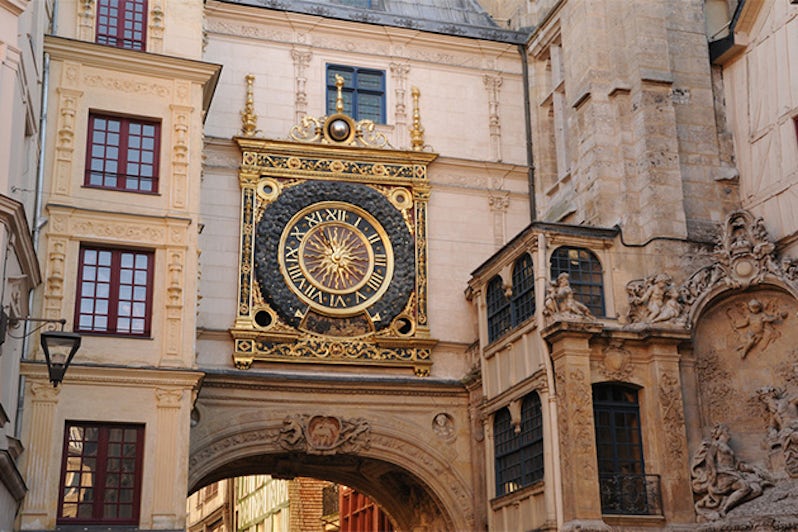
Best Time to for French River Cruise
Compared with many other river cruise routes, France has a long season. The majority of cruises run from early spring (late March) through to late fall (November). The best value cruises can be found at the beginning and end of the season; it's worth noting that France, particularly the south, can be hot in July and August, reaching the mid-80s, so walking and sightseeing can be tiring. Some cruises operate from March to December, providing the opportunity to visit festive markets and go shopping in the run-up to the holiday season.
French River Cruise Lines
All the big name European river cruise companies offer French itineraries: AmaWaterways, Avalon, CroisiEurope, Viking River Cruises, Scenic Tours, Tauck and Uniworld. Larger companies in the barge market include CroisiEurope, European Waterways and French Country Waterways. There are also many solo barges, often run by husband-and-wife teams. One of the most luxurious that caters predominantly to the U.S. market is Apres Tout, offering fully inclusive itineraries and bespoke cruises in the Burgundy region.
French River Cruise Itineraries
The first choice is whether to opt for one of the mainstream river vessels or the more intimate experience of a barge cruise. Then it's a fairly simple process of looking at France's four main river cruising areas and deciding which one appeals.
For an extended time in Paris, opt for a Seine cruise, which is also the shortest flight time for passengers who want to visit the U.K. (Viking River Cruises offers a "Downton Abbey" tour to Highclere Castle, the film location of the popular PBS TV series, as an Oxford-based pre- and post-cruise tour option.) Similarly, in southern France, Rhone itineraries provide a stepping stone to neighboring Spain, via a road transfer, and the chance to explore Barcelona, the vibrant capital of the Catalan region. Passengers interested in wine and vineyard tours should head for cruises through Burgundy on the Rhone and Saone, and Bordeaux on the Dordogne and Garonne. Loire cruises travel through the picturesque area that's renowned for its elegant chateaux.
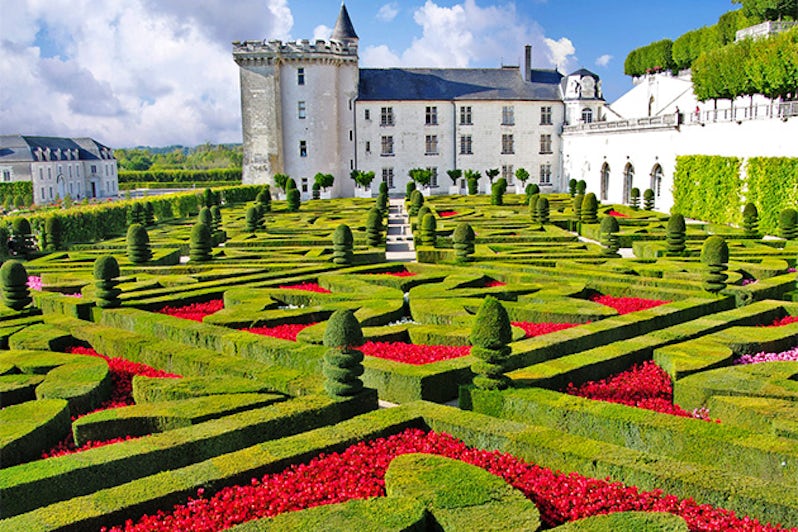
Here are more details on each of the main regions:
Rhone and Saone. The Rhone and Saone run through the gastronomic heartland of France, taking in Burgundy, Provence and the South of France. The 505-mile Rhone flows from the Swiss Alps through southern France and into the Mediterranean Sea, west of Marseille. Once an important trading route for the Greeks and Romans, today's cruises run along the southernmost stretch.
Passengers are transported through picturesque sunflower-filled landscapes that inspired artists such as Vincent Van Gogh. You'll also find medieval cities like Avignon "The City of the Popes," Lyon with its Roman ruins and modern-day trappings as the culinary capital of France, and artistic towns that include Arles, where Van Gogh lived and painted famous works including "The Langlois Bridge at Arles," which is still instantly recognizable today. You can also expect guided tours of the region's vineyards, with tutored tastings and the chance to buy wine.
The Saone River is the chief tributary of the Rhone, winding its way through the vine-clad countryside and passing towns such as Chalon-sur-Saone with its pretty half-timbered buildings surrounding the cathedral and interesting museum devoted to local photography pioneer Joseph Niepce. Other notable places of interest include Beaune, with its 15th-century Hotel Dieu hospital topped by an intricately tiled roof, and the old monastic town of Tournus. Smaller waterways, including the Canal de Bourgogne and Canal du Centre, are used by hotel barges.
For more information on Rhone and Saone river cruises, read our Rhone River Cruise Tips.
Seine. Rising in Burgundy, the 482-mile Seine runs through the heart of the French capital. Nearly all cruises will spend at least one night docked in Paris with a guided panoramic tour taking in the main sights, plus free time to shop or watch the world go by at one of the many street cafes. Part of the fascination of the Seine is that it remains an important commercial waterway. Flowing into the English Channel at Le Havre, it's navigable by oceangoing vessels as far as Rouen, and river cruisers will share the water with all kinds of vessels, including barges laden with freight.
Voyages on the Seine will include Normandy, the northern region of France where attractions include the village of Auvers-sur-Oise, also once home to Van Gogh, and Napoleon and Josephine Bonaparte's 17th-century Chateau de Malmaison, which is now a museum. Many lines offer full-day excursions to the poignant D-Day landing beaches along the Normandy coastline, including Omaha, Juno and Gold Beach, and other Second World War landmarks like the Arromanches Debarkment Museum, overlooking the spot where one of the artificial Mulberry Harbours was constructed, and where its remains can still be seen a few hundred feet from the shore.
For more on Seine River cruises, read Seine River Cruise Tips.
Loire. The country's longest river at 629 miles, the Loire runs through central and western France from the Cevennes Mountains to the Bay of Biscay. Not all of the river is navigable, and with its 246-mile Cher tributary, it's a popular area for barge cruises. The Loire Valley is called the "Garden of France," and it's the largest site in France to be listed as a UNESCO World Heritage Site. It's dotted with more than 1,000 chateaux, dating from the early medieval to late Renaissance periods. Originally built by kings and aristocracy, many are now privately owned, and the magnificent home and gardens are open to visitors. They include Chateau d'Usse, which is said to have inspired Charles Perrault to write the fairytale "The Sleeping Beauty" in 1697 and, latterly, it was one of several castles that helped Walt Disney design his theme park castle.
On Loire cruises, expect visits to vineyards producing Sancerre wine and a trip to Angers, the capital of the historical Anjou province with quaint cobbled streets and the chance to buy the local orange-based liqueur Cointreau. Optional excursions might include the chance to go to Saumur to watch Cadre Noir, the French National Riding School, where horses perform classical dressage movements.
Dordogne and Garonne. The UNESCO-listed port city of Bordeaux and surrounding world-famous vineyards are top attractions on cruises along the Garonne and Gironde in southwest France. The 300-mile Dordogne and the 341-mile Garonne meet at the Gironde Estuary, which also flows into the Atlantic Ocean at the Bay of Biscay. Cruises in this area will appeal to wine-lovers, and many lines offer wine-themed trips with visits to vineyards and cellars to taste sought-after Medoc and Margaux wines. Also popular are visits to Sauternes, famous for its dessert wine.
Itineraries read like a wine list, including trips to Saint-Emilion, with its well-preserved medieval streets, and Bergerac, known for its truffles. One or two nights are usually spent in Bordeaux, and vessels dock on the waterfront so it's easy to explore the city on foot and spend time in Place des Quinconces, one of Europe's largest town squares.
It's also worth mentioning the 149-mile Canal du Midi, one of the world's oldest working canals, built between 1667 and 1694. With the 19th-century Canal de Garonne, it forms "the canal of the two seas," providing a link between the Mediterranean and Atlantic, and it's another popular waterway for barge cruises.
For more on cruising here, read Bordeaux River Cruise Tips.
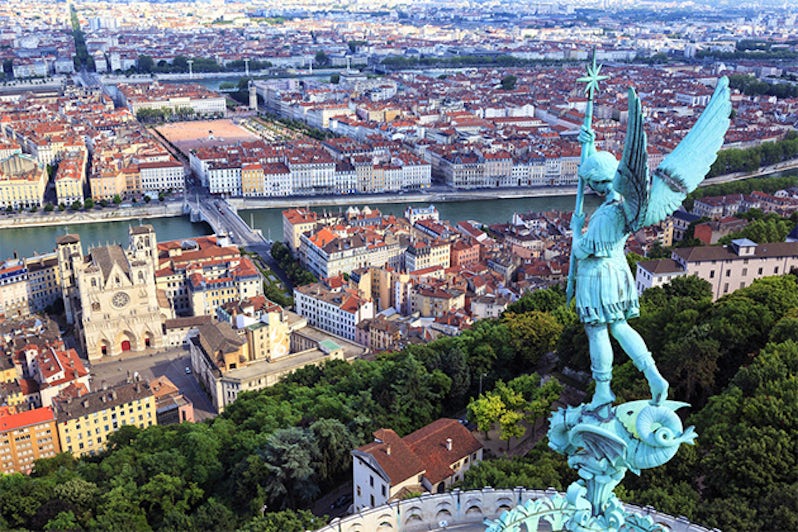
French River Cruise Port Highlights
Paris: One of the world's most visited capitals, the "City of Light" is home to 500 historic monuments and nearly 100 museums. There you'll find iconic sights immortalized in films and books the world over: the Eiffel Tower, Champs-Elysees, Arc de Triomphe and Louvre gallery (with the chance to see Leonardo da Vinci's enigmatic but surprisingly small Mona Lisa). You can also visit charming neighborhoods, such as the Montmartre artists' quarter.
Giverny: From the port at Vernon, a short drive leads to the village of Giverny and the home and garden of artist Claude Monet, the founder of the 19th-century Impressionist art movement, which created a scandal in the traditional art world when it first appeared. The beautiful gardens, with the famous Japanese bridge and water garden, show the inspiration for much of his work.
Rouen: A highlight of the grand city where Joan of Arc was tried in the Market Square and burned to death at the stake is Notre Dame Cathedral. Arguably the most beautiful Gothic cathedral in the whole of France, it has intricate architecture spanning the 13th to 16th centuries, flamboyant decoration and elaborate stained glass. Also make time to check out the amazing 14th-century gilt clock that spans the pedestrian street Rue du Gros Horloge.
Avignon: Home to seven popes in the 14th century, the vast UNESCO-listed Palace of Popes is another medieval Gothic masterpiece. A further symbol of Avignon is the Saint Benezet bridge across the Rhone. In the Middle Ages, it was part of an important pilgrimage route between Italy and Spain, but now only four of the original 22 arches remain. From Avignon, many cruise lines offer included excursions to renowned Chateauneuf-de-Pape wineries.
Dijon: Dijon, the historic capital of Burgundy, is famous for its mustard and Creme de Cassis blackcurrant liqueur. The Moutard de Maille shop on Rue de la Liberte sells more than 45 flavored mustards, including one made with Cassis, which make great souvenirs to take back home. Look out for the tiny stone owl set in the wall of Notre Dame Church; touch it for good luck and to ensure you will return to Dijon!
Blaye: Situated on the Gironde estuary, Blaye's impressive 17th-century UNESCO-listed citadel was built to protect the city of Bordeaux, located further upstream, and the climb to the top is rewarded by spectacular views of the river. Tours to Cognac, famous for its namesake fine brandy, are available from Blaye; some even offer the chance to blend your own bottle.
Lyon: Known as the food capital of France, the landmark Fourviere Hill provides panoramic views of the cityscape with Renaissance buildings that are a legacy of the 16th-century silk industry, plus the remains of the original Roman city. The Lyon Cathedral, dedicated to St. John the Baptist, is another church famous for its astronomical clock, and the Museum of Fine Arts showcases the finest collection of sculptures and paintings outside Paris.
Nantes: The 19th century science fiction novelist Jules Verne was born in this city located between Brittany and the Loire Valley. Once the spot from where numerous slave ships set sail for Africa, attractions range from the historic -- the Nantes memorial to the abolition of slavery is one of the largest in the world -- to the creative and eccentric. A 40-foot wooden and steel Jules Verne-inspired elephant carries visitors along the quayside, and art installations include a giant sea snake by the river bank and a surreal submerged house.
Saint-Nazaire: Situated on the Loire estuary and the Atlantic Ocean, Saint-Nazaire has been a shipbuilding stronghold since 1861. An STX shipyard tour provides an awe-inspiring view of Harmony of the Seas taking shape. When the world's largest cruise ship launches in April 2016 the yard will commence work on Royal Caribbean International's giant sister ship (the first steel plates have already been cut). Step into the maritime past at the innovative Escal' Atlantic. Housed in the city's old submarine base, you walk through a recreated liner with artefacts from legendary Saint-Nazaire-built vessels such as the 1935 Normandie.
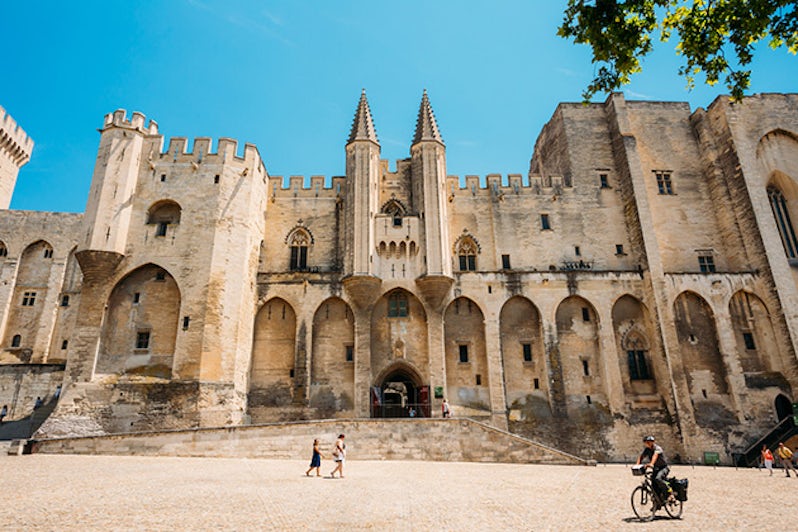
French River Cruise Tips
Watch the water. Fluctuating water levels, caused by too much or too little rain, can occasionally affect cruise itineraries. In the first instance, vessels cannot navigate low bridges, and in the second, the shallow water poses the threat of running aground. Cruise lines constantly monitor the situation and will plan ahead. If vessels cannot sail, they will organize longer excursions and use roads to transport passengers to places of interest or move them to a different ship further along the river so the cruise can continue.
Prepare for leisurely dining. In France, mealtimes -- especially lunch -- are an institution, and diners will linger over their food. So expect dishes to be served at a slower pace than they are in the U.S., with longer pauses between each course, particularly when eating at local restaurants ashore. Also, many shops will close at lunchtime, typically between noon and 2 p.m. (Throughout France the majority of shops are closed on Sundays.)
Dress for conditions. Weather in Europe can be erratic, even in summer, so always pack layers, including a light rain jacket, and bring an umbrella.
Expect to be full. The food in France can be very rich and heavy for anyone not used to French cuisine. It's sometimes overwhelming, particularly when served with copious amounts of wine matched to each dish. Cooked lunches and dinners are the norm, usually featuring meat served in a buttery sauce (vegetarians can struggle), followed by a selection of cheeses and a creamy dessert. Sometimes it's best to skip the occasional meal and buy a sandwich or salad in a cafe or fast food outlet. (You'll find all the familiar names in larger cities.)